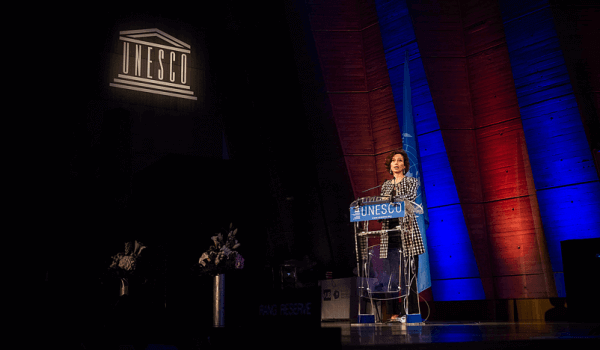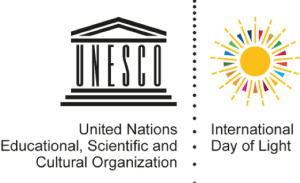Ophthalmology Humanitarian Projects Create
A Better World Through Compassionate Ethical Medical Care
March 2021
Jeffrey P. Rutgard MD
Hawaiian Eye Foundation
The issue of global blindness and significant visual impairment from cataracts affects ~100 million people worldwide. 90% live in developing countries where the blind have both geographic and economic barriers to receiving the appropriate cures.
As fortunate Ophthalmologists living in the U.S. or other developed countries we have choices:
We can choose to politely ignore this global disparity
We can choose to talk about this global issue
Or We can choose to actually do something about this significant global issue
For those ophthalmologists who desire to do something about the global problem of curable blindness we must do so guided by an ethical code of medical and surgical care. Just as in our medical practices in the United States we should always strive to improve our professional care in the best interest for each of our patients whether in the United States or in a developing country.
Humanitarian Ophthalmology Projects Ethical Guidelines:
1 Competence – just as ophthalmology residents have an attending-physicians overseeing their work and allowing them to take over at any time during surgical procedures to make sure the patient has a very good result, we do the same in the mission field. This same policy is done with all ophthalmologists on our humanitarian medical team to ensure competent care is provided to every patient during these projects.
2, All patients sign an informed consent explaining that it is their choice to proceed with any surgeries. This information is explained via a translator in situations where the patient cannot read or write.
- There is no testing of new un-approved products on patients during our humanitarian projects. We utilize products that are used for patients in the United States.
- Patients are assessed (pre-operatively) prior to their treatments / surgeries where decisions are made based upon the best interest of the patients.
- All residents who pre-screen patients discuss the disposition of care and do not proceed with patient care unless approved by the attending physician.
- All patients are given post-operative instructions both in writing and verbally in the majority of cases with their guardian. All patients are instructed to return to the clinic for post-operative follow up appointments. The local hosts for these projects are given contact information so patients with post-operative concerns can receive follow up medical care and guidance via Telemedicine through the host conduit.
- Humanitarian projects are established through invitation by in-country local government physicians and leaders. . In contrast, there are physicians who do not follow the above code of ethics and decide on their own to set up humanitarian projects in locations they desire and proceed to “do their thing.” However, such a plan is fraught with numerous calamities, including but not limited to; lack of patient consent, creating a project not approved by local physicians or governmental authorities and frequently inexperienced with mission medical equipment including the portable operating microscope and the important procedure of Manual Small Incision Cataract Surgery. Years of establishing ethical humanitarian ophthalmology projects has resulted in very good to excellent patient results worldwide for the poor who could never afford the cost of these surgeries that would restore them into sighted people once again so that they could be productive members of heir family instead of being a burden to their already impoverished families. Such humanitarian ophthalmology projects are transformative for the blind poor helping them work their way out of the depths of poverty.
Ophthalmology Resident Burnout has been documented:
“Conclusions and Relevance These results suggest that there is a substantial burden of burnout and depression among US ophthalmology residents and that there are opportunities to boost wellness in ophthalmic graduate medical education by making wellness curricula more accessible to residents and ensuring that residents have time to attend wellness programs.”
Ophthalmology Missions Projects fulfill a need for residents to:
- Develop a selfless purpose using their medical / surgical knowledge to help the less fortunate –& blind poor.
- Become Global Medical Citizens – participating annually in charitable Ophthalmology projects
- Look forward to these special programs in their residency program
- Enhance cross cultural and diversity experiences with patients and professionals in developing nations which an enhance a deeper understanding of the diverse immigrant and minority cultures patients in the U.S.
Cost Effective Health Care Dollars
Jeffrey P. Rutgard, M.D.
Why Sight?
Blindness and visual impairment is a solvable world crisis.
An estimated 39 million people are blind worldwide, with another 246 million living with significant visual impairment. Eighty percent (80%) of global blindness is caused by cataracts, a condition that can be reversed with a 15-20 minute operation.
Poverty & Sight
Blindness or visual impairment can keep individuals and families trapped in the devastating abyss of poverty. By restoring sight and preventing blindness, those affected are able to, once again, take care of themselves and their health. They can be productive members of their family and release a member of their family from the bondage of being a fulltime care-taker for the blind relative. Once visually rehabilitated through cataract surgery, the blind or visually impaired person can lift themselves, and their family, out of poverty. The World Bank ranked cataract surgery as one of the most cost-effective health interventions that can be offered in low- and middle-income countries to the many who cannot afford the cost of such surgery.
Education and Opportunity
Globally, 19 million children are visually impaired or suffer from blindness. Children who have vision problems are most often unable to get an education. Those who have their sight restored are given an average of 50 years of sight, allowing them to learn and build a brighter future filled with opportunity.
Empowering Women and Girls
Two-thirds of the world’s blind are female. We reach out to women and girls to make sure they are receiving the essential eye care they need, overcoming the social, cultural, and economic barriers they may face. As a result, they can lead healthy, productive lives.
Profound & Immediate Impact
The majority of eye care treatments can transform a life almost instantly. A pair of glasses brings the world into focus. A 15-20 minute cataract operation restores sight and independence. Eye drop medication for eye infections prevent suffering and potentially decades of blindness. Quality eye care provides an immediate and lasting impact.
Builds a Better Future
When you restore sight to one person, you are giving life to two people. Seventy-five percent (75%) of visually impaired people are assisted by a relative to do basic Activities of Daily Living (ADLs) such as washing, dressing, toileting, and eating. A majority of the time this relative is a child. Restoring vision to an adult releases these “seeing eye children” and allows them to return to productivity and attend school. Since cataracts are common, cataract surgery relieves many people in each extended family from the economic, educational, and productive barriers that deepen their poverty and affect their daily quality of life. Restoring vision to the impoverished allows them to lead productive lives, while enabling entire communities a better future.
Build Capacity
Partnering with local hospitals and members of the community to provide training skills and services improves access to quality eye care. The result is improved infrastructure for eye care, which decreases needless blindness.
Surgery
Low cost, high-quality surgeries cure blindness. Over 50% of blindness is caused by cataracts. For as little as $100, a 15-20 minute eye surgery can cure this condition.
Glasses
A pair of glasses can bring the world into focus. They open the door of opportunity for children to receive an education and adults to work and have a better future.
Medical Treatment
Access to the most basic eye drop or eye ointment medicine can mean the difference between a simple eye infection, acid chemical burn, or corneal abrasion healing in a few days, or a life tragically altered by blindness. Creating an infrastructure of trained, local, eye care personnel and access to medications can make all the difference for the future of a child or an adult.
Where Should This Eye Care Be Directed?
The greatest need is found in developing countries around the world. A majority of people live without the benefit of desperately needed medical care. Of those blind from curable cataracts, 90% live in developing nations.
Summary
Blindness and visual impairment can be prevented and/or cured in the majority of cases worldwide. Eye treatment in the form of cataract surgery, glasses, and medications for infections and minor injuries are some of the most cost-effective health dollars. Focusing on the prevention and treatment of curable eye problems can transform the lives of those living in developing countries where access to this care is both unaffordable and unavailable. The result is an improvement in the quality of life and economics for individuals, their families and their communities.
The Hawaiian Eye Foundation Yap Core Mission Team – 2018
Following the successful Yap mission, the Hawaiian Eye Foundation became a member of the UNESCO Steering Committee, to participate in the long-term strategic planning of future International Day of Light events.
Day and Night – Light Installation by Kari Kola at Unesco Headquarters in Paris, France, from the link: https://www.lightday.org
On 16 May 2019, the Hawaiian Eye Foundation executives will attend an afternoon and evening celebration with the UNESCO team in Trieste, Italy. The Executive Director of the Hawaiian Eye Foundation, Darrah Kauhane, will address the participants to tell the story of the founding of the Foundation and the importance of its vital work in developing countries.
Photos of the UNESCO auditorium:



Watch the official video of the International Day of Light of May 16, 2018.

The link to the Youtube official video of UNESCO’s IDOL is shown at https://youtu.be/acelisSU6Nw.
The Hawaiian Eye Foundation supports new international collaborations and welcomes sponsorships to help expand its mission work to cure blindness within and beyond the Asia Pacific region: hawaiianeyefoundation.org







